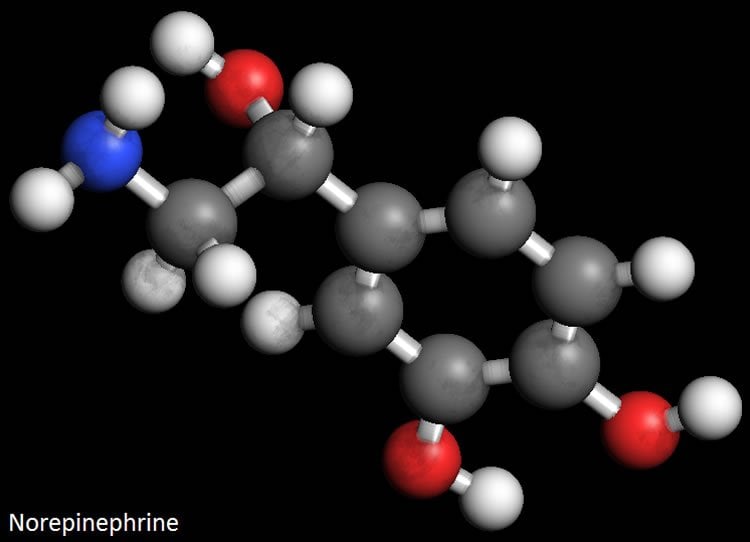UMass Amherst scientists discover key role for neuromodulator in auditory function.
For neuroscientists studying the intricate mechanisms of hearing in the brain’s auditory cortex, a major question has been how a listener can focus in a noisy environment, and how neurochemicals help neurons convey as much embedded information as possible for the rest of the brain to act on.
In the Journal of Neuroscience this week, doctoral student Maaya Ikeda and her advisor, neuroscientist Luke Remage-Healey at the University of Massachusetts Amherst, report finding that the neuromodulator norepinephrine has an unexpected, direct action on auditory processing of complex signals, specifically bird songs in the zebra finch.
The authors say, “Studying the role of neuromodulators and their interactions in cortical circuits that encode and decode complex sounds may provide insight into treatments of neurological and sensory-processing disorders” such as schizophrenia, attention deficit hyperactivity disorder, post-traumatic stress disorder and autism.
Remage-Healey, who primarily studies how estrogens act as neurotransmitters in the brain, explains, “One reason we work with songbirds is that they learn sounds and structure them in complex ways that are like human speech. In previous studies in animals that produce relatively simple sounds like an alarm call, norepinephrine enhanced auditory processing of vocalizations.”
“Now because of Maaya’s work, we understand that norephinephrine enhances the ability of neurons to code for complex sounds,” he adds. “We also thought norepinephrine may be regulating estrogens like estradiol, but Maaya’s experiments clearly show that’s not the case.”
In mammals, the neuromodulator norepinephrine is involved in wakefulness and attention, and can immediately change neuronal properties to enhance the signal-to-noise ratio in processing simple sounds such as a bark or a whistle. The signal-to-noise ratio refers to how well a response to a stimulus stands out from background activity. By analogy, for example, at a busy cocktail party this ratio is how well a friend’s voice stands out from the general hubbub.
For these experiments, Ikeda infused norepinephrine into zebra finches’ auditory cortex as they listened to complex sounds like song snippets, to assess any change in signal-to-noise ratio. She recorded 18 individual neurons to see if their behavior and response properties changed in the presence of norepinephrine or control solution.
To analyze neuronal response in each condition, she used a pattern classifier computer algorithm written by co-author and UMass Amherst cognitive neuroscientist Rosemary Cowell. The algorithm was trained to recognize distinct patterns of neuron firing and discriminate among responses to different finch songs. With a high accuracy, the algorithm could tell from the firing pattern which song the finch was hearing.

Ikeda explains, “In this way, you can test how well the neurons in the listening bird are able to resolve the signal against background noise, and how much information each neuron is gaining from the song.” She found that norepinephrine enhanced the encoding of songs by individual neurons by decreasing background noise firing. What surprised the researchers was that this mechanism was entirely separate from a similar signal enhancement by estradiol shown in previous work.
Remage-Healey says, “These experimental results show that norepinephrine increases the signal-to-noise ratio by suppressing the background noise firing, or to finish the analogy, by quieting the crowd at the cocktail party.”
Another advance linked to Ikeda’s experiments is establishing that studying neuronal function in songbirds yields information relevant to the human brain. As the researchers explain, mammals are more closely related to humans, but most mammals, except a few such as whales, dolphins and elephants, do not learn or use complex vocalizations. So determining that songbirds who learn complex sounds to communicate provide an appropriate model is advantageous.
Ikeda says, “I think this opens up a new area of research for understanding how neuromodulators interact to control complex auditory processing. Our result is evidence that in addition to conserved neural structures and behaviors, the underlying neurophysiology is also similar between birds and mammals.”
Funding: This work was supported by the National Institutes of Health.
Source: Janet Lathrop – University of Massachusetts Amherst
Image Credit: Image credited to US Government and is in the public domain
Original Research: Abstract for “Norepinephrine Modulates Coding of Complex Vocalizations in the Songbird Auditory Cortex Independent of Local Neuroestrogen Synthesis” by Maaya Z. Ikeda, Sung David Jeon, Rosemary A. Cowell, and Luke Remage-Healey in Journal of Neuroscience. Published online June 24 2015 doi:10.1523/JNEUROSCI.4445-14.2015
Abstract
Norepinephrine Modulates Coding of Complex Vocalizations in the Songbird Auditory Cortex Independent of Local Neuroestrogen Synthesis
The catecholamine norepinephrine plays a significant role in auditory processing. Most studies to date have examined the effects of norepinephrine on the neuronal response to relatively simple stimuli, such as tones and calls. It is less clear how norepinephrine shapes the detection of complex syntactical sounds, as well as the coding properties of sensory neurons. Songbirds provide an opportunity to understand how auditory neurons encode complex, learned vocalizations, and the potential role of norepinephrine in modulating the neuronal computations for acoustic communication. Here, we infused norepinephrine into the zebra finch auditory cortex and performed extracellular recordings to study the modulation of song representations in single neurons. Consistent with its proposed role in enhancing signal detection, norepinephrine decreased spontaneous activity and firing during stimuli, yet it significantly enhanced the auditory signal-to-noise ratio. These effects were all mimicked by clonidine, an α-2 receptor agonist. Moreover, a pattern classifier analysis indicated that norepinephrine enhanced the ability of single neurons to accurately encode complex auditory stimuli. Because neuroestrogens are also known to enhance auditory processing in the songbird brain, we tested the hypothesis that norepinephrine actions depend on local estrogen synthesis. Neither norepinephrine nor adrenergic receptor antagonist infusion into the auditory cortex had detectable effects on local estradiol levels. Moreover, pretreatment with fadrozole, a specific aromatase inhibitor, did not block norepinephrine’s neuromodulatory effects. Together, these findings indicate that norepinephrine enhances signal detection and information encoding for complex auditory stimuli by suppressing spontaneous “noise” activity and that these actions are independent of local neuroestrogen synthesis.
“Norepinephrine Modulates Coding of Complex Vocalizations in the Songbird Auditory Cortex Independent of Local Neuroestrogen Synthesis” by Maaya Z. Ikeda, Sung David Jeon, Rosemary A. Cowell, and Luke Remage-Healey in Journal of Neuroscience. Published online June 24 2015 doi:10.1523/JNEUROSCI.4445-14.2015






